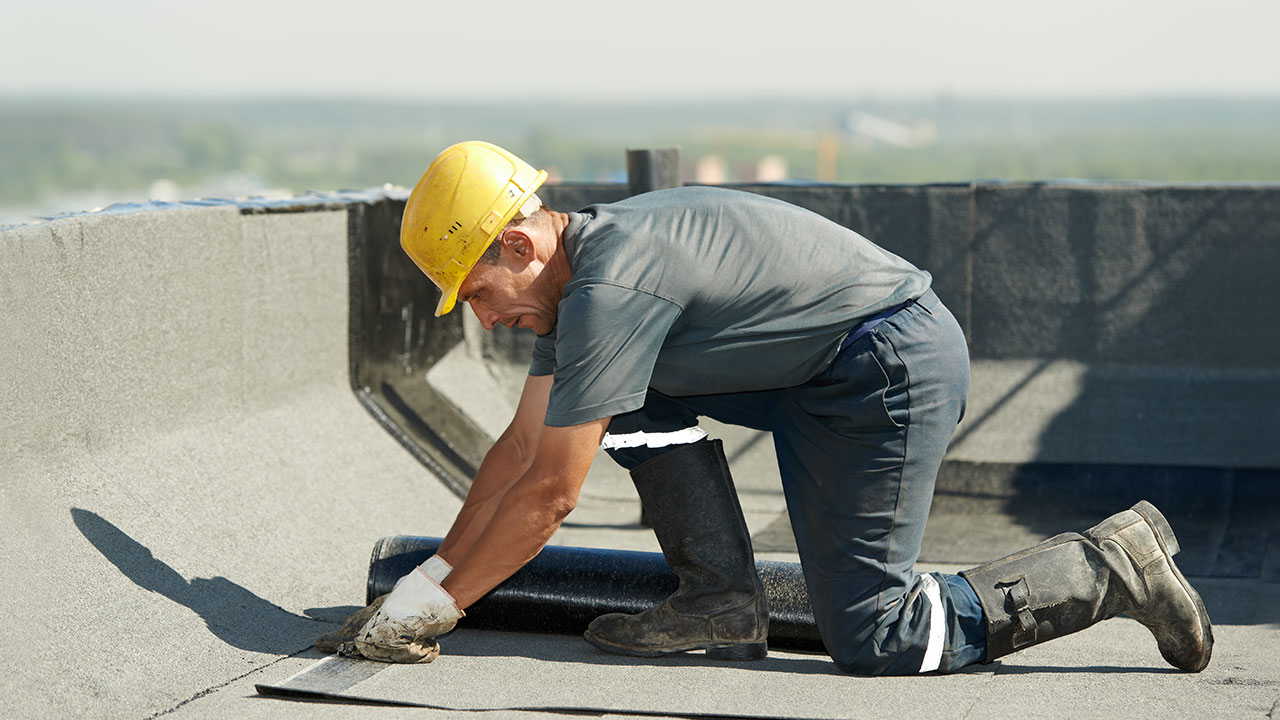Winter is approaching across the Northern Hemisphere, which means it’s time to prepare for thermal expansion—and its more dangerous cousin, thermal shock.
Thermal expansion is an inherent property of matter. When materials get cold, the molecules that comprise them slow down their vibration and contraction. At the scale observable to the human eye, this presents itself as shrinkage. When materials warm up, they gain energy and expand. When materials are exposed to repeated cycles of expansion and contraction, they tend to lose their flexibility and accrue damage over time—and this damage could occur to the materials in your roof.
There are several factors that make thermal expansion more of a risk around this time of year:
- We’re moving from a period of general warmth to a period of general cold. The materials that comprise your roof will shrink, which makes it possible for gaps to open up between membranes, flashings, and penetrations—promoting leaks.
- If your roof has existing water infiltrations or leaks created by thermal expansion, then the effect of expansion will be exacerbated. Unlike most materials, water will expand by up to 9 percent when it freezes. This expansion will work against the contraction of the surrounding material and increase damage.
- Lastly, there’s thermal shock to worry about. Thermal shock occurs when different parts of a material expand or contract by different amounts during an extreme temperature change. The stress of this differential can cause wood and membranes to crack.
Although thermal expansion is a year-round problem, it’s exacerbated during extreme temperature swings in the summer and winter.
Thermal Shock Threatens Cracking and Splitting for Roofing Materials
In the winter, some areas could see temperature swings of 50 degrees or more, such as when an arctic cold front swoops in and drops temperatures from the 60s or 70s to the 10s or 20s—making the perfect environment for thermal shock. As if that weren’t enough, regular building operations can promote thermal shock as well.
The external membrane of a building can cool down dramatically overnight, when the external air is coldest and the building is unheated. Once occupants enter the building and turn on the heat, the temperature inside the building rises. If the building is poorly or unevenly insulated, that means that the inside of the roofing membrane will be warm while the outside is still below freezing. In short, one part of the material is trying to expand while the other part is trying to contract—a condition where older or end-of-life building materials can split wide open.
Preparing for Thermal Expansion in Your Roof
Not every roof is at immediate risk for thermal shock. Generally, damaged material—or material that’s nearing the end of its operational life – is in more danger.
Hairline fractures in your roof can be a sign of a problem. These indicate that the roof may already be experiencing damaging thermal expansion. During the next opportunity for a thermal shock, these hairline fractures will be the highways where more damaging cracks will travel.
While hairline cracks are hard to spot, other signs are more visible. Popped seams, protruding screws, and damaged penetrations are all signs that your roof is moving in a violent and uncontrollable manner, literally tearing itself apart in areas where it’s already vulnerable. Without immediate intervention, the membrane itself will break—a much more costly repair.
Lastly, leaks are a sign that thermal shock is either about to happen or has happened already. Not only are leaks a sign of a thermal shock, they can exacerbate thermal shocks during the winter. Now—before freezing temperatures head our way—is the best time to take care of any leaks in your roof.
Preventing Thermal Shock
When trying to prevent thermal shock, your facilities program has three avenues.
First, you can make sure that your roof is fully insulated, as a lack of insulation can exacerbate thermal shock during the winter.
Second, you can apply a reflective coating. In the summer, this coating will prevent heat from building up on your roof during the day and dissipating during night, which can be a cause of thermal shock during the warmer months.
Lastly, you can institute a maintenance program. This will allow you to inspect your rooftop for damage that might lead to thermal shock and halt the early signs of thermal shock in its tracks. By replacing damaged membrane and repairing damaged flashings, penetrations, and insulation, you’ll make your roof resilient for years to come.
To keep your roof safe from thermal expansion, it’s a good idea to regularly inspect and repair your roof when necessary. Investing in structures such as walkways and supports allows your workers to traverse the roof safely—without risk to themselves or to the material of the roof itself. Taking small measures to ensure your roof’s protection will go a long way toward prolonging its life.




